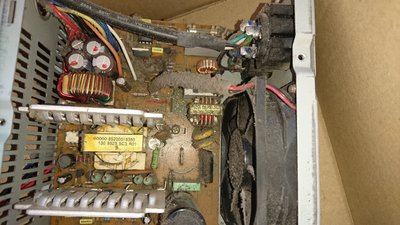Ahoy, ahoy,
I'm wondering about this PSU I have in my portable PC. It's been pointed out to me that bad caps can cause all manner of discomfort for the system as a whole, and I have this bugger under suspicion of causing graphical issues (ripple).
Now, this PSU is a pretty specific form factor, kinda T-shaped and quite small at ca. 15x10x10 cm and with the fan facing the other way from the power switch and connector. It doesn't even say how many Watts it has on the sticker (I guess that should be ~275W), so I'm generally wondering if this is a decent quality PSU that I should keep and attempt to recap, or if I'm better off finding a replacement? Any idea what this form factor is called? I've looked around but it can't be all that common...
I imagine it could be somehow possible to make the guts of a more modern (and potentially reliable) ATX PSU fit into this chassis and use an ATX-to-AT adapter, or mod the whole PC case to accomodate a PSU with a different form factor! And is there a certain ATX form factor that's pretty small would be suitable for replacement?
The PC case in question also doesn't have a power button, so it would either have to be a PSU with a power button, or I have to install one somewhere, which would mean more alterations.













